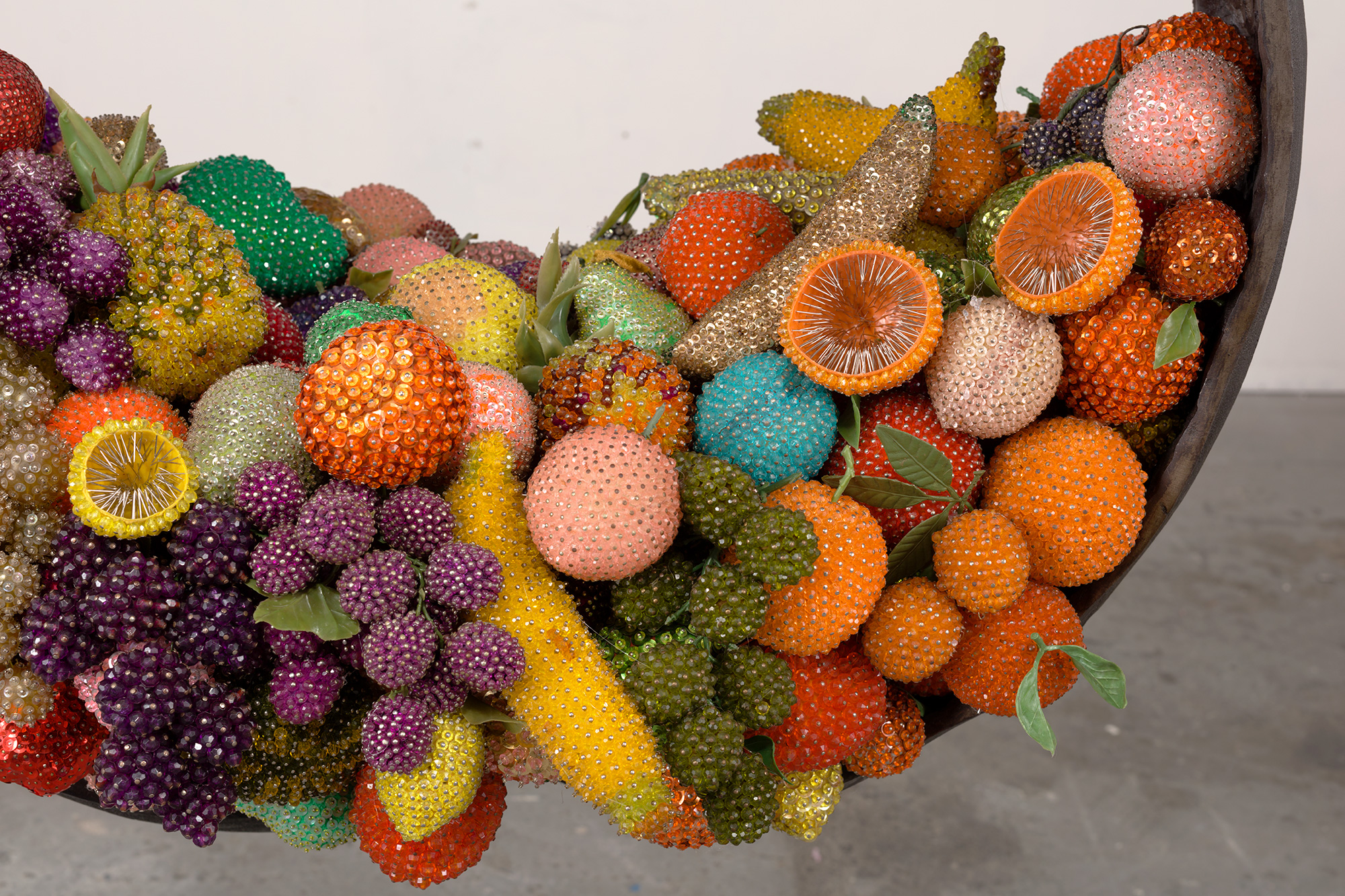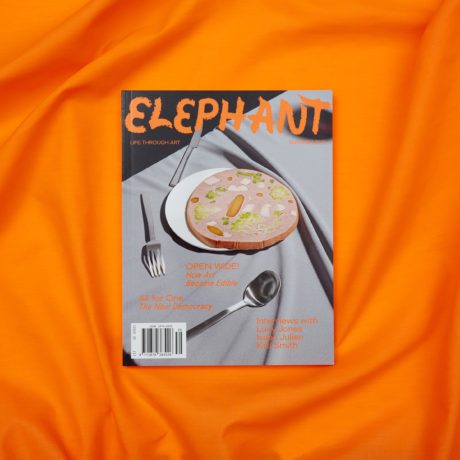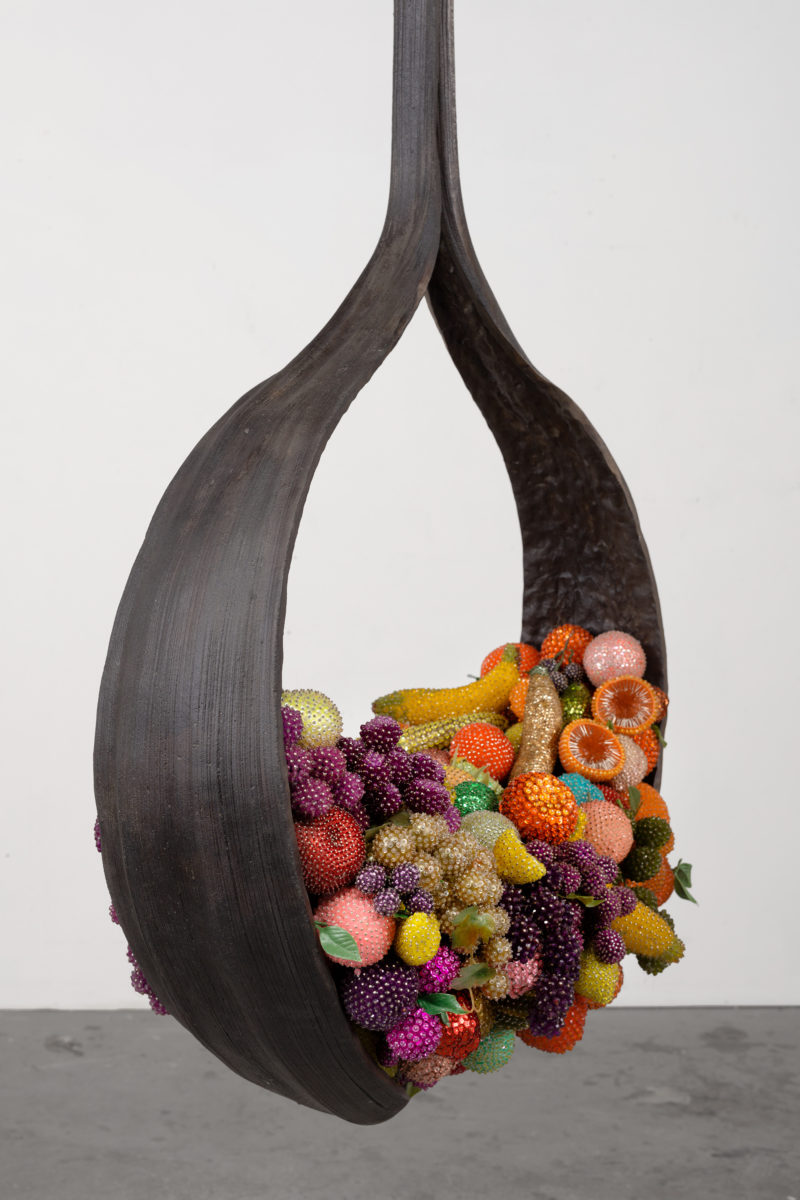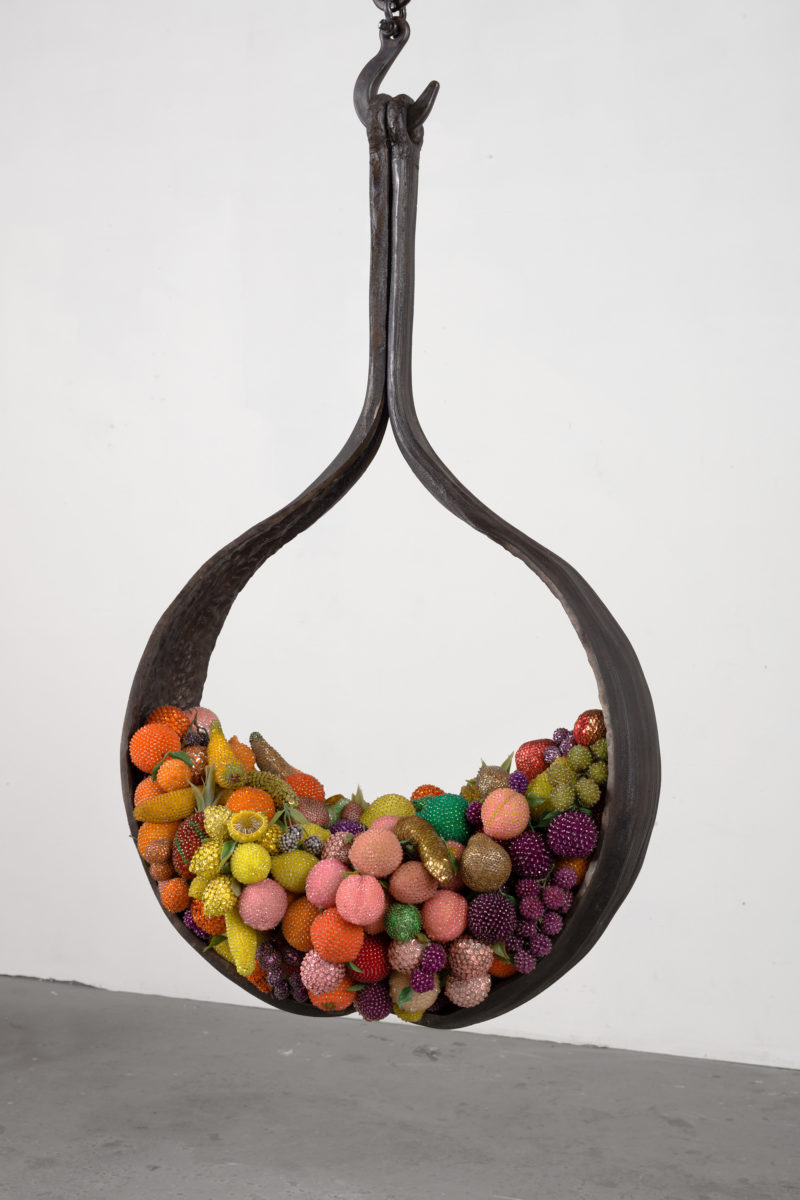
Can you tell me about your interests in contaminated nature—and your exploration of the Anthropocene—particularly in relation to your work Satellite in Repose?
I like to think of that work as a skeleton of a satellite dish with its panels removed. Dozens of ceramic birds perch on the satellite’s frame and drip out of it; they are infused within it. The birds are glazed with a cloudless, murky sunset gradient, it’s a sort of post-apocalyptic mood. Meanwhile the satellite dish points up to sky, drawing in the desaturated sunset that drips back down to earth. The birds are made out of clay, so it all returns to the earth in some sense.
When I was making this work, I was thinking a lot about technology’s ability to reach intangible energy—light, sound, communication—and how the satellite dish is really tied to this ephemeral, intangible thing. But it’s very grounded by the earth as well, as if frozen in nature. Installed in Josh Lilley’s basement gallery in London in 2018, the work’s attempts to collect communication and life took on a new meaning, extending the cycle of energy passing from sky to earth even deeper.
This piece really represented the title of the show, Seven Sculptures at Sunset. Here I was thinking of the sunset as this frozen moment in between the life of day and death of night; all of these sculptures were somehow arrested in that moment of transition. The sunset, perhaps because it’s so fleeting, is viciously alive. All the sculptures have a lot of life and death—vibrating, buzzing like a hummingbird.

“Since I was a kid, I have obsessively frequented thrift stores, and a lot of work comes from things I find there”
What drew you to the bejewelled fruit that you use in “Fountain of Youth”, and where did you find them?
Since I was a kid, I have obsessively frequented thrift stores, and a lot of work comes from things I find there. Years ago, I started finding plastic pin bead fruits from the sixties and seventies and started buying them; eventually I had a small collection and realized I wanted to do something more interesting en masse. So, I turned to eBay, where I discovered a seemingly endless supply. People were selling entire fruit bowls, however many hours of their labour. I spent a year obsessively hunting on eBay, I would say I made about 200 purchases.
Sometimes they would come with little notes from their makers; I remember one batch came from an old lady who said she made them with her brother in 1959 and was happy they had a good home. I told her that the note really touched me, but I didn’t tell her, or anyone else, that I was using their fruit creations for art—mostly just because I hate writing emails—but I do think about it a lot; what might happen if everyone could see their old objects in their new life.
- Fountain of Youth, 2018
They are originally sold as kits of mass-produced plastic fruits and packs of beads and pins, and you bedazzle your own fruit by piercing the surface. It’s a really repetitive and meditative action. I was attracted to how anonymous and intimate they are at the same time, how hundreds of different people’s work goes into these objects—the density of anonymous people, the density of the surfaces. The objects are light and cheap, but the surfaces are so painstakingly and densely embellished. The human action that went into these objects, even though they’re so fake—literally plastic encrusted in plastic—is what makes them so fascinating.
With Fountain of Youth, I realized when you pile up all that bejewelled plastic together, it ends up looking really juicy and plump. The fruit is cradled by a giant cast iron form modelled on the husk of a big seed pod of a palm tree in LA. This sculpted form is also reminiscent of a pincher, or a calliper. It spills and fills out the space; a frozen, swelling abundance preserved in plastic.
“All the works have something to do with mortality, like in vanitas paintings”
A lot of your work plays with and challenges the viewer’s emotions and sense of value. What draws you to the line between what’s cheap and sacred; delectable and repulsive?
The idea for the three lemon sculptures (Semi-Precious Bone, Fool’s Mould, and Sour Pearls) actually came out of working with these hobbyist fruits. For all three works, the value is in the mould: the yellow parts are just glass beads, but the bits that have “gone off” are made from luxurious yet natural materials—crystals and semi-precious and precious gemstones; there are also freshwater pearls and carved bone and coral beads.
All the works have something to do with mortality, like in vanitas paintings. Ivy vines, shells, fruit, depicting decay and death and rot but are very much alive—fruit is dying, but mould is thriving. By using natural materials for the mould it has this energy to it that you can feel. They’re dying but they’re also suspended in this buzzing aliveness.

Is there a possible moralistic reading of your work?
Not really—I’m interested in how people relate to value, and my sculptures are a way of teasing out that relationship and playing with our sense of judgement. In a sense, my work can be read as a critique of wild consumerism and displays of wealth, but it also totally, happily indulges in it. The works are skeptical of the “more is more” attitude, and are also like, well fuck it, more is more. The works I showed at Josh Lilley are maybe a bit more complicated in their decadence, while earlier works—like a giant snake ring with crystal eyeballs and gigantic grape bunches made out of polished concrete are total exhibitionists—revel in the decadence of supposedly humble materials.
This article originally featured in issue 39
BUY ISSUE 39







